When it comes to navigating the difficult waters of employee termination, clarity and respect are essential. A well-structured letter can help ensure the process is both professional and compassionate, especially when it involves a violation of company policy. By addressing the specifics of the violation and outlining the steps taken prior to the decision, you provide transparency and understanding. Ready to explore our comprehensive guide on crafting the perfect termination letter? Let's dive in!
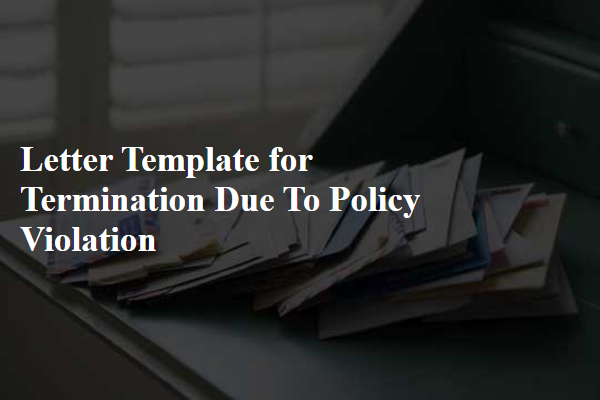
Clear statement of policy violation
A termination letter due to policy violation should clearly outline the specific policy that has been violated, documenting the event and its consequences. For instance, a consistent breach of the company's confidentiality agreement, where sensitive information was improperly shared outside of authorized personnel, may lead to dismissal. Written warnings dated May 15 and June 20 indicated the seriousness of the violation, emphasizing adherence to established standards. The final decision to terminate employment, effective immediately, is based on the accumulation of these infractions, which compromise the organization's integrity and trust. Documentation of the violation and the termination process will be filed for record-keeping and compliance purposes.
Specific evidence or incidents cited
In a corporate environment, a termination letter can be drafted to communicate the end of an employee's contract due to a policy violation, supported by specific evidence. The document should include the employee's name, position, and employee identification number for identification purposes. On the date of termination, the letter should outline the policy violated, referencing documentation such as an employee handbook or specific company policies related to workplace conduct. For example, if the violation involves unauthorized use of company resources, detail the nature of the misuse, including dates and any witnessed incidents. Additionally, the letter may cite instances where warnings were issued, highlighting prior counseling sessions or written notices that emphasized adherence to company policies. The communication should also include the final paycheck details, information regarding benefits, and the procedure for returning company property. This structured approach ensures clarity and maintains professionalism during the termination process while adhering to legal and HR standards.
Reference to prior warnings or discussions
Termination of employment often results from repeated policy violations, emphasizing the importance of adherence to workplace standards. Documented communications, such as written warnings or verbal discussions, establish a clear record of the employee's non-compliance. Specific incidents, ranging from tardiness to inappropriate behavior, contribute to the decision-making process. HR departments typically review company policies outlined in the employee handbook, ensuring that the termination aligns with established guidelines. Locations for these procedures often reside within corporate offices or human resource departments, where confidential meetings take place to safeguard employee privacy. Further, legal considerations may arise, necessitating compliance with labor laws to avoid potential disputes or claims of wrongful termination.
Effective termination date
Termination of employment due to policy violations can profoundly affect both the employee and the organization. Companies, such as Tech Innovations Inc., typically follow a structured process when terminating an employee for policy breaches, which may include violations of the Code of Conduct, harassment policies, or safety regulations. In this context, the effective termination date, often noted as the last official working day, could be set immediately or after a defined notice period depending on company policy. Employees should receive formal documentation outlining the specific violations, such as repeated tardiness or unauthorized absence, that led to this decision. Additionally, the HR department typically reviews the case to ensure compliance with labor laws, providing the employee with necessary information related to final paychecks, benefits, and any applicable appeals processes.
Instructions for final settlements and return of company property
Termination of employment due to policy violation can lead to various critical administrative actions. Employees must adhere to company policies, which outline acceptable behavior and responsibilities. When a violation occurs, management, such as HR departments, will typically issue formal termination letters summarizing the reasons for the termination and referencing specific policies breached. The document may detail procedures for final settlements, including outstanding salaries, unused vacation days, or reimbursement for any allowable expenses. Additionally, employees are usually required to return company property, such as laptops, access cards, or confidential information, detailing deadlines and methods for returning these items. Following such processes ensures compliance with labor laws and protects the company's interests while supporting a clear exit strategy for the former employee.
Letter Template For Termination Due To Policy Violation Samples
Letter template of job termination for non-compliance with company policies.

Letter template of layoff for failure to adhere to established guidelines.

Letter template of employment cessation for disregard of organizational standards.
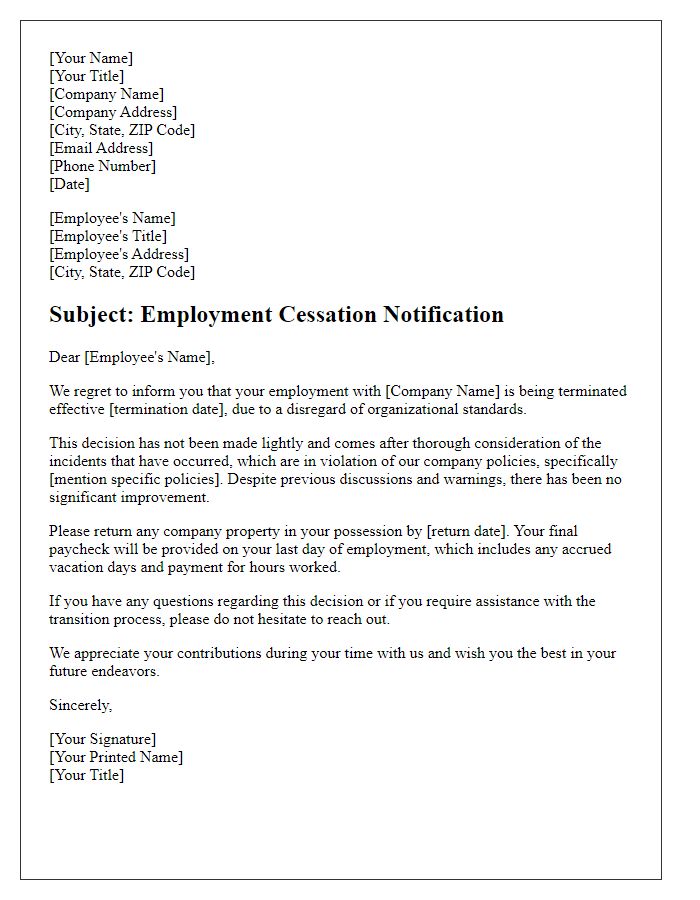
Letter template of termination notice for failure to follow company regulations.
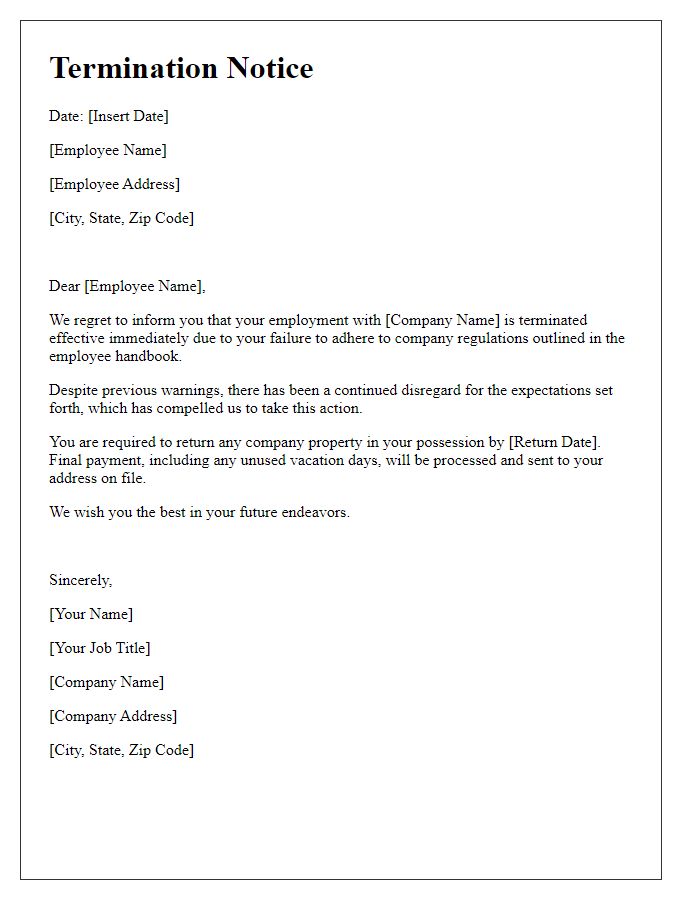
Letter template of discontinuation of employment for violating rules and protocols.
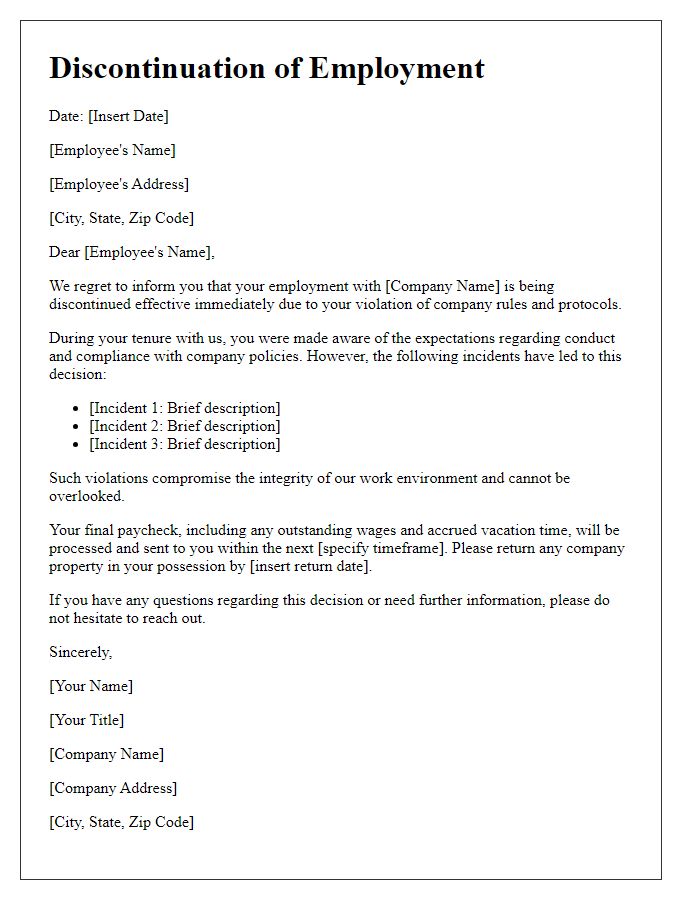

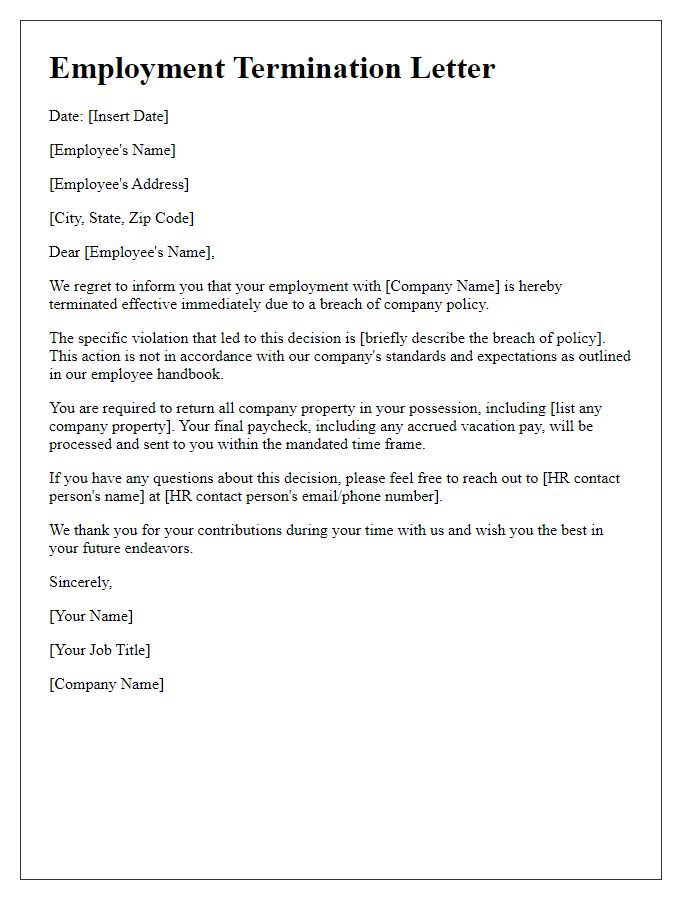
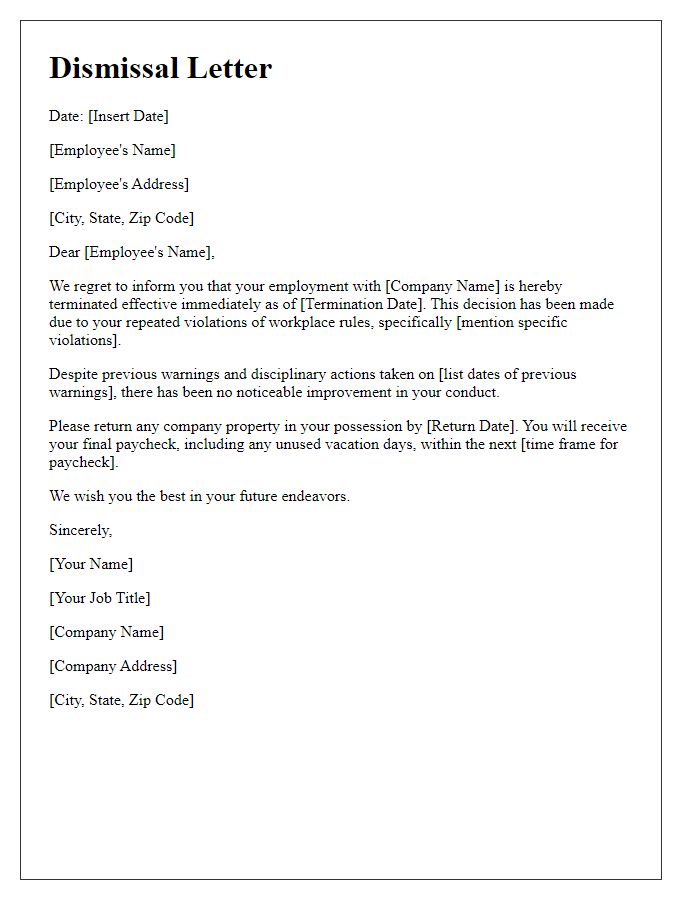
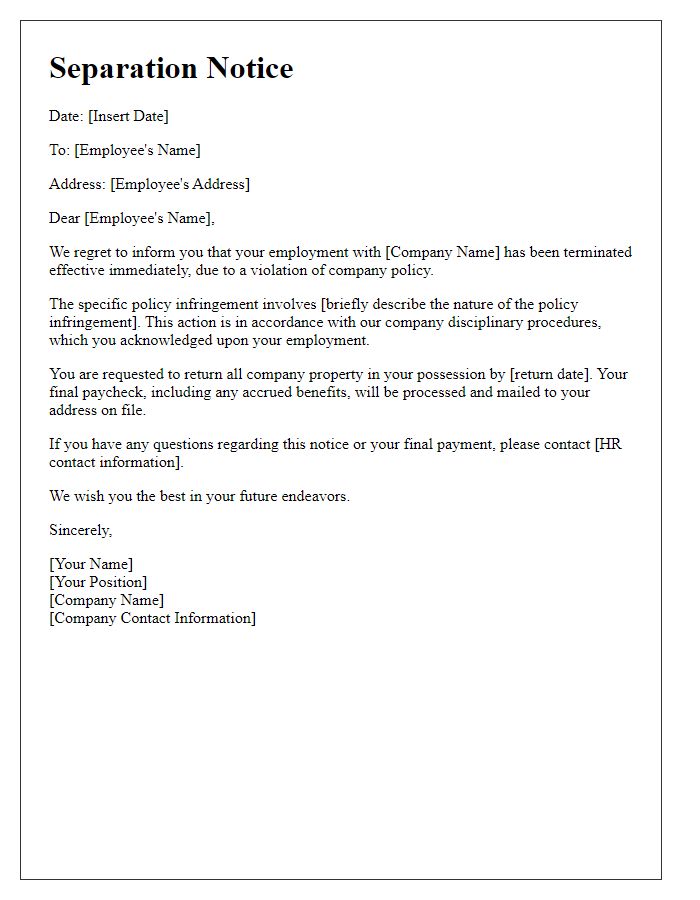
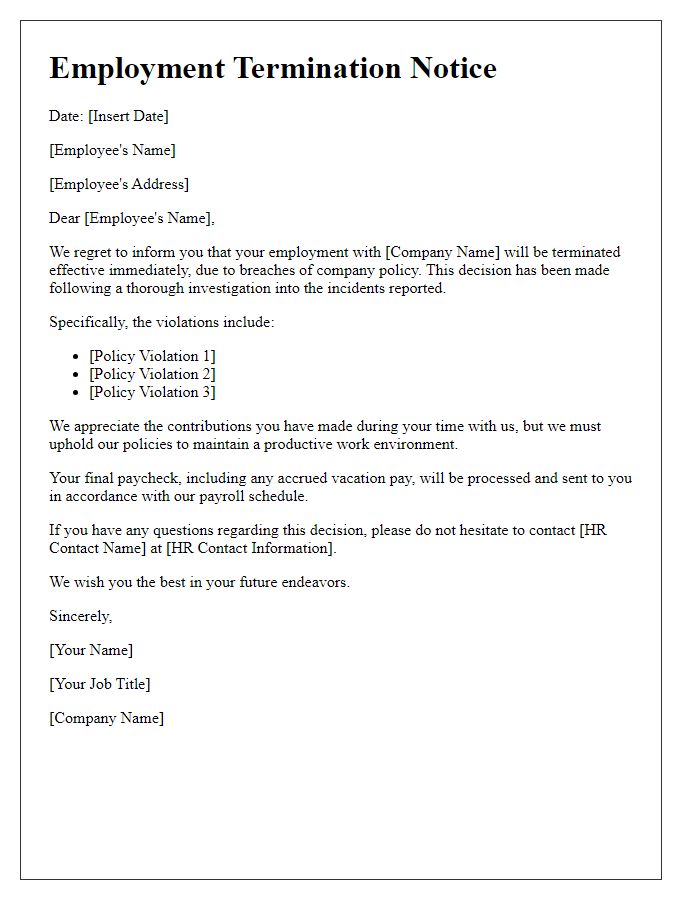
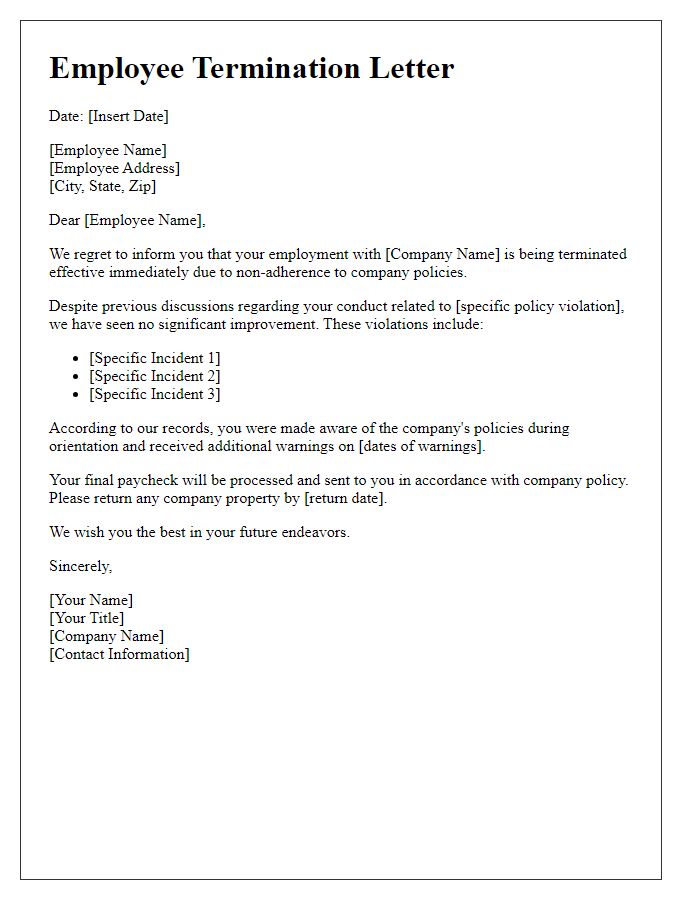


Comments